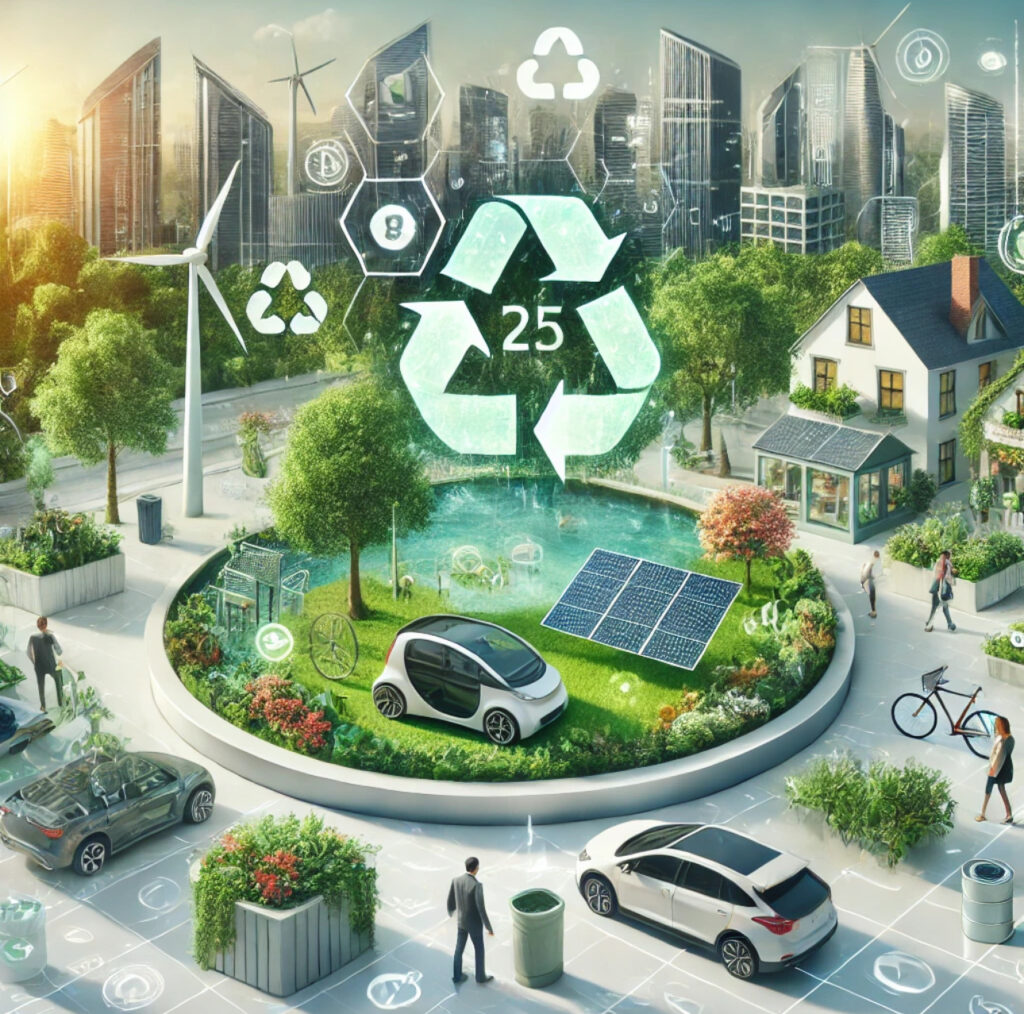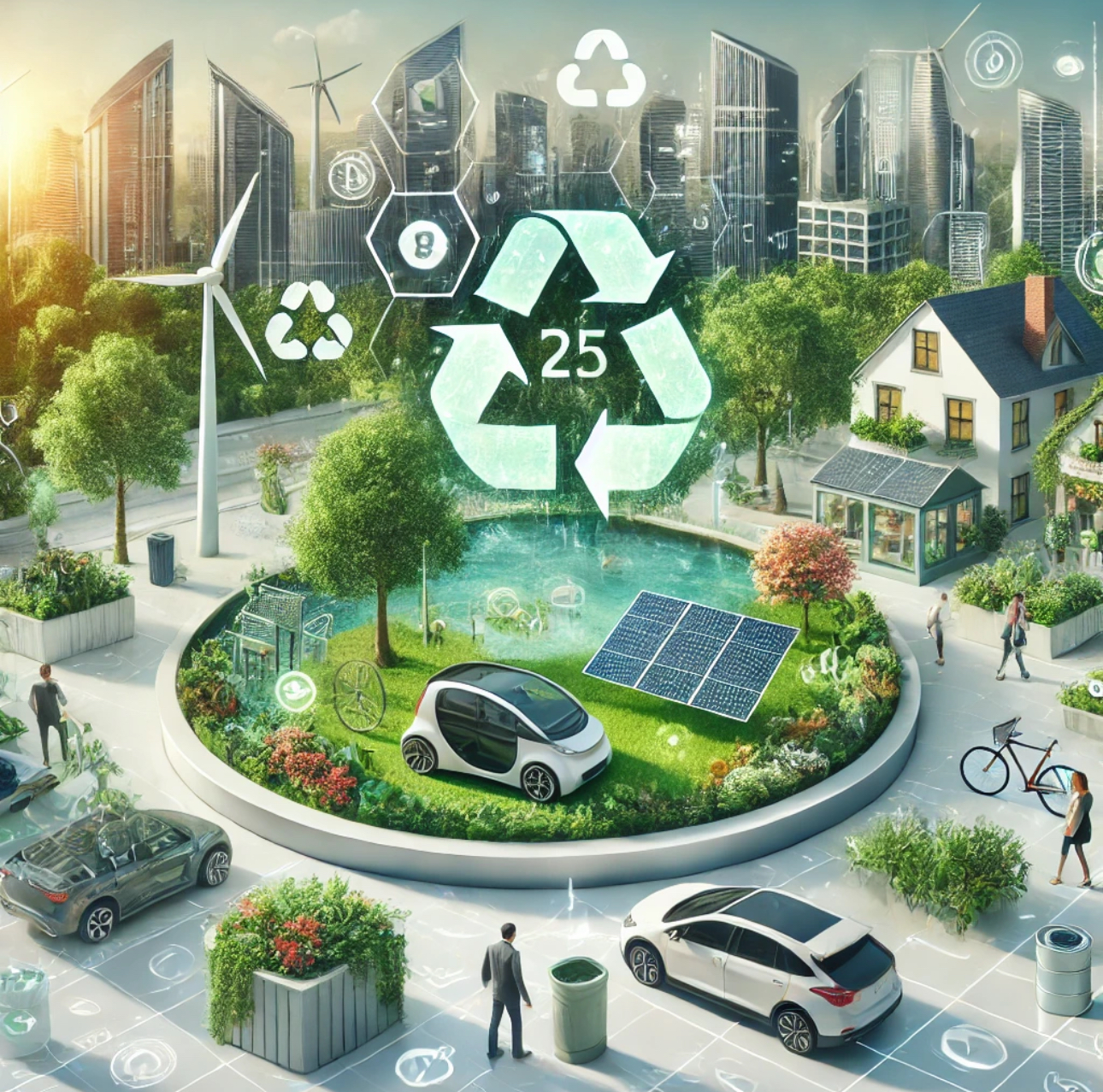The world is rapidly moving towards a more sustainable future, and by 2025, several emerging trends will redefine how we live, work, and interact with our environment. This article explores the top sustainable living trends to watch and adopt in 2025, offering insights into innovations and practices that can enhance your eco-friendly lifestyle.

Key Takeaways
- Circular Economy Practices will become mainstream, emphasizing reuse, recycling, and waste reduction.
- Renewable Energy Adoption will surge, with advancements in solar, wind, and alternative energy sources.
- Smart Homes and IoT Devices will optimize energy consumption and promote efficient resource use.
- Sustainable Transportation options like electric vehicles and shared mobility will dominate urban areas.
- Regenerative Agriculture will gain prominence, focusing on soil health and carbon sequestration.
- Zero-Waste Lifestyle will become more accessible through innovative products and community initiatives.
- Plant-Based and Lab-Grown Foods will expand, reducing the environmental impact of food production.
- Eco-Friendly Building Materials will revolutionize construction, promoting energy efficiency and sustainability.
- Environmental Education and Advocacy will intensify, fostering a culture of sustainability.
- Corporate Sustainability Commitments will strengthen, with businesses adopting greener practices.
Introduction
As environmental concerns intensify, sustainable living is no longer just an option—it’s a necessity. By 2025, technological advancements and increased awareness will make sustainable practices more accessible and impactful. Embracing these trends not only benefits the planet but also enhances quality of life and fosters community well-being.
1. Embracing the Circular Economy
The circular economy model focuses on designing out waste and keeping products and materials in use.
Key Aspects
- Product Lifecycle Extension: Designing durable products that can be repaired and upgraded.
- Resource Recovery: Recycling materials at the end of a product’s life to create new products.
- Sharing Economy: Promoting access over ownership through services like tool libraries and rental platforms.
How to Adopt
- Choose Durable Goods: Invest in high-quality items that last longer.
- Support Circular Businesses: Purchase from companies that prioritize circular practices.
- Participate in Sharing Platforms: Use services that allow sharing of resources and goods.
2. Surge in Renewable Energy Usage
Advancements in renewable energy technologies will make clean energy more affordable and widespread.
Trends to Watch
- Solar Power Expansion: Improved efficiency and reduced costs of solar panels.
- Community Energy Projects: Localized renewable energy initiatives providing shared benefits.
- Energy Storage Solutions: Enhanced batteries and storage systems for consistent energy supply.
How to Adopt
- Install Home Solar Panels: Generate your own electricity and reduce utility bills.
- Choose Green Energy Providers: Switch to companies offering renewable energy options.
- Support Renewable Initiatives: Participate in or invest in community energy projects.
3. Smart Homes and Internet of Things (IoT)
Smart technologies will optimize resource use, making homes more energy-efficient and sustainable.
Innovations
- Intelligent Energy Management: Systems that adjust energy use based on real-time data.
- Automated Appliances: Devices that operate efficiently with minimal human intervention.
- Home Monitoring Systems: Track water usage, air quality, and energy consumption.
How to Adopt
- Upgrade to Smart Devices: Use smart thermostats, lighting, and appliances.
- Integrate Home Automation: Implement systems that manage energy use seamlessly.
- Monitor Consumption: Use apps and devices to stay informed about your resource use.
4. Sustainable Transportation Revolution
Transportation will evolve with a focus on reducing emissions and enhancing efficiency.
Emerging Trends
- Electric Vehicles (EVs): Greater affordability and extended range make EVs more accessible.
- Shared Mobility Services: Increased use of car-sharing, bike-sharing, and electric scooters.
- Infrastructure Development: Expansion of charging stations and dedicated lanes for eco-friendly transport.
How to Adopt
- Consider EVs for Your Next Vehicle: Explore electric or hybrid options.
- Use Public Transit and Shared Services: Reduce reliance on personal vehicles.
- Advocate for Sustainable Infrastructure: Support policies promoting eco-friendly transportation.
5. Regenerative Agriculture Practices
Agriculture will shift towards methods that restore ecosystems and sequester carbon.
Principles
- Soil Health Improvement: Techniques like crop rotation and cover cropping enhance soil fertility.
- Biodiversity Enhancement: Integrating diverse plant and animal species into farming systems.
- Carbon Sequestration: Capturing atmospheric carbon in soil and plants.
How to Support
- Buy Regeneratively Grown Foods: Look for labels indicating regenerative practices.
- Support Local Farmers: Purchase from markets and CSAs that prioritize sustainable methods.
- Grow Your Own Food: Implement regenerative techniques in personal gardens.
6. Adoption of a Zero-Waste Lifestyle
Zero-waste principles will become more attainable through innovative solutions.
Strategies
- Bulk Buying and Refill Stations: Reduce packaging waste by purchasing in bulk.
- Composting Organic Waste: Turn food scraps into valuable compost for gardening.
- Reusable Products: Increase availability of reusable alternatives to disposable items.
How to Adopt
- Start Small: Replace single-use items with reusable ones.
- Educate Yourself: Learn about waste reduction strategies and local resources.
- Join Zero-Waste Communities: Connect with others for support and idea-sharing.
7. Expansion of Plant-Based and Lab-Grown Foods
Alternative proteins will gain popularity, reducing the environmental impact of food production.
Developments
- Plant-Based Alternatives: Improved taste and texture make them more appealing.
- Cultured Meats: Lab-grown meats offer ethical and sustainable options.
- Insect Protein: Sustainable and nutritious, insect protein may become mainstream.
How to Incorporate
- Try New Products: Experiment with plant-based or cultured meat alternatives.
- Reduce Meat Consumption: Incorporate more vegetarian meals into your diet.
- Stay Informed: Follow developments in sustainable food technologies.
8. Use of Eco-Friendly Building Materials
Sustainable materials will transform construction and home design.
Innovations
- Green Concrete: Low-carbon alternatives to traditional concrete.
- Recycled Materials: Using reclaimed wood, metal, and glass in construction.
- Energy-Efficient Designs: Incorporating passive solar heating and cooling.
How to Adopt
- Choose Sustainable Materials: For renovations or building projects, opt for eco-friendly options.
- Work with Green Builders: Select contractors experienced in sustainable construction.
- Incorporate Energy Efficiency: Invest in insulation, windows, and designs that reduce energy use.
9. Intensified Environmental Education and Advocacy
Awareness and education efforts will empower more people to engage in sustainability.
Focus Areas
- School Programs: Enhanced sustainability curricula in education.
- Community Workshops: Local events teaching practical eco-friendly skills.
- Digital Platforms: Online courses and resources accessible to a wider audience.
How to Participate
- Attend Workshops: Expand your knowledge on sustainability topics.
- Support Educational Initiatives: Volunteer or donate to organizations promoting environmental education.
- Share Knowledge: Educate others through conversations, social media, or community involvement.
10. Strengthened Corporate Sustainability Commitments
Businesses will increasingly adopt sustainable practices and transparency.
Corporate Actions
- Net-Zero Goals: Companies committing to carbon neutrality.
- Sustainable Supply Chains: Ensuring ethical and eco-friendly sourcing.
- Transparency Reporting: Public disclosure of environmental impact and sustainability efforts.
How to Support
- Choose Sustainable Brands: Purchase from companies with strong environmental commitments.
- Hold Companies Accountable: Engage with businesses to encourage sustainable practices.
- Invest Responsibly: Consider environmental impact when making investment decisions.
Conclusion
Sustainable living in 2025 will be characterized by innovation, accessibility, and collective action. By embracing these top trends, individuals can significantly reduce their environmental footprint and contribute to a healthier planet. The integration of technology, community engagement, and conscious consumerism will drive the shift towards a more sustainable and resilient future.
FAQ
What is the circular economy, and how does it differ from the traditional economy?
The circular economy is an economic model focused on eliminating waste and the continual use of resources. Unlike the traditional linear economy—which follows a ‘take-make-dispose’ approach—the circular economy designs products for durability, reuse, and recyclability, creating a closed-loop system that minimizes resource input and waste.
How can smart home devices contribute to sustainability?
Smart home devices optimize energy and water use by adjusting consumption based on real-time data and user behavior. For example, smart thermostats learn your schedule to efficiently manage heating and cooling, while automated lighting systems reduce electricity use by turning off lights when rooms are unoccupied.
What are the benefits of regenerative agriculture?
Regenerative agriculture improves soil health, increases biodiversity, enhances ecosystem services, and can sequester carbon dioxide from the atmosphere. This approach leads to more resilient farming systems, healthier food, and contributes to combating climate change.
How does adopting a zero-waste lifestyle impact the environment?
A zero-waste lifestyle reduces the amount of waste sent to landfills and incinerators, lowers pollution, conserves resources, and reduces greenhouse gas emissions associated with waste decomposition. It promotes a circular economy by keeping products and materials in use.
What advancements are making plant-based and lab-grown foods more popular?
Technological innovations have improved the taste, texture, and nutritional profile of plant-based foods. Lab-grown meats are becoming more viable due to advancements in cellular agriculture, making them a promising sustainable alternative to traditional meat production.
How can I ensure that the brands I support are truly committed to sustainability?
- Research Companies: Look for sustainability reports and certifications.
- Third-Party Verifications: Trustworthy certifications like B Corp, Fair Trade, or LEED indicate genuine efforts.
- Transparency: Companies that openly share their practices and progress are often more credible.
What role does environmental education play in promoting sustainability?
Environmental education raises awareness about ecological issues, teaches practical skills for sustainable living, and empowers individuals to make informed decisions. It fosters a culture of environmental stewardship and collective responsibility.
By staying informed and proactively adopting these trends, you can play a vital role in shaping a sustainable future. Every action counts, and together, we can make a significant difference for the planet and generations to come.


Leave a Reply